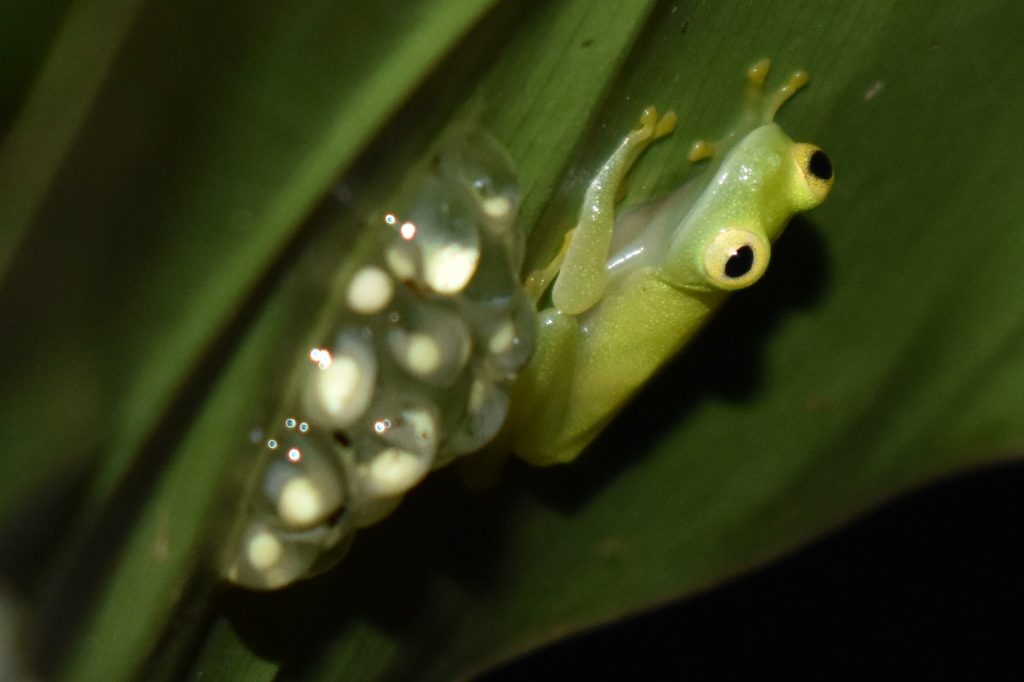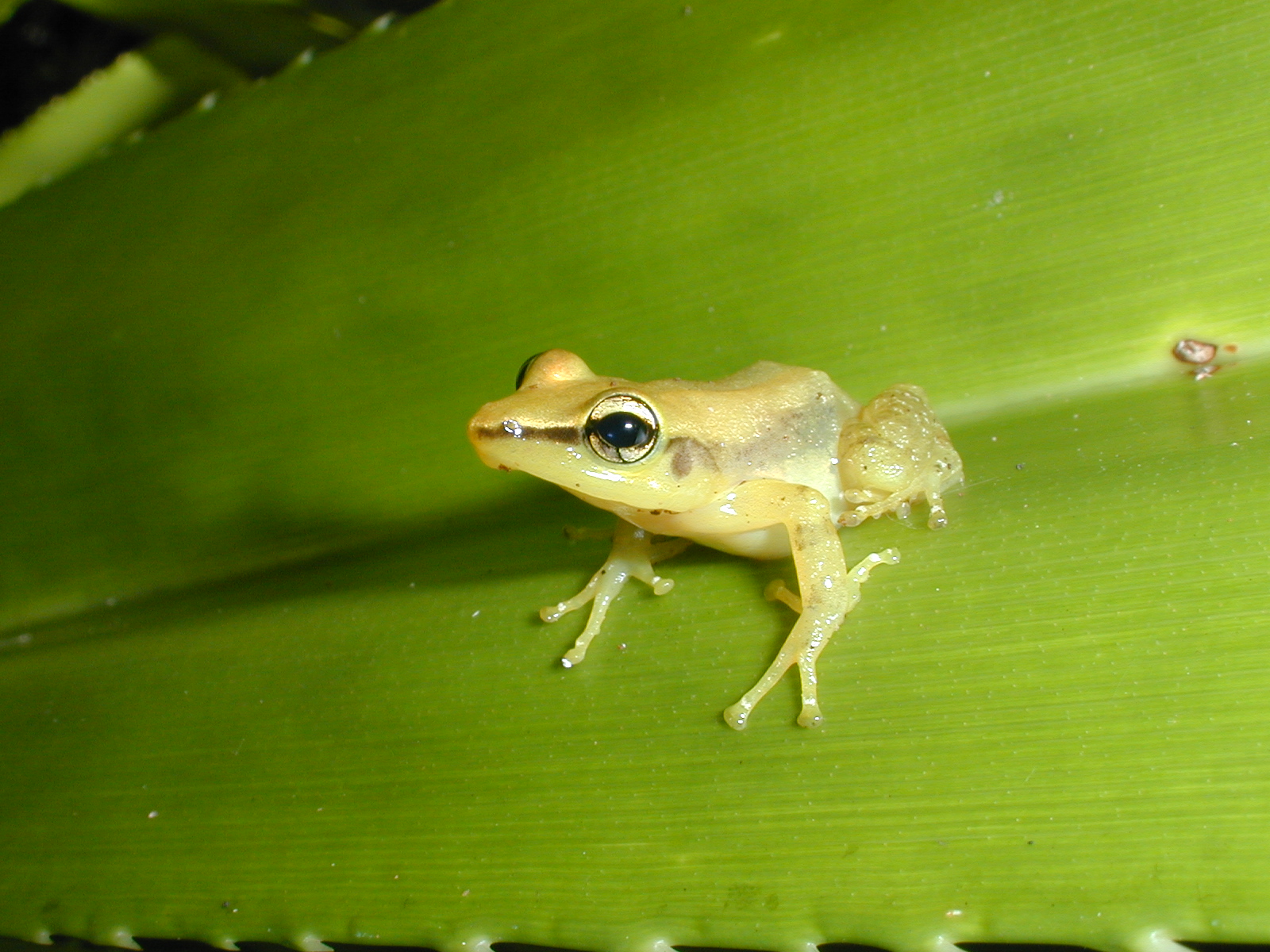I sit here in mid-December with the thermometer holding steady at 19 degrees F (-7 degrees C) and all the frogs, snakes, salamanders and lizards in Ohio are down for a long winter’s nap. Only a few weeks ago, however, I was studying the Tobago glass frog down in Trinidad and Tobago where it never got below 77 F (25 degrees C) and the snakes, lizards and frogs were seemingly crawling and jumping everywhere (sorry, no salamanders in T&T).
The focus of my trip was this fellow, the Tobago glass frog (Hyalinobatrachium orientale tobagoense).

This species is common on the island of Tobago and was breeding extensively during my November visit. Which was a good thing because mating choices were what I had come to study. Usually, assessing reproductive success in amphibians is difficult because the eggs are extremely well hidden (both from predators and scientists). The Tobago glass frog, however, lays eggs on the undersides of leaves above streams, where the fathers guard usually them until they hatch. So, just by looking to see how many egg clutches a male has, you can tell how much mating success he has had. By comparing lots of males and their reproductive success over time, one can determine what traits females select mates based on.
Or that is the hope anyway. I’m just now entering the data into my computer as the snowflakes fly out the window and I wistfully remember the feeling of warmth.

